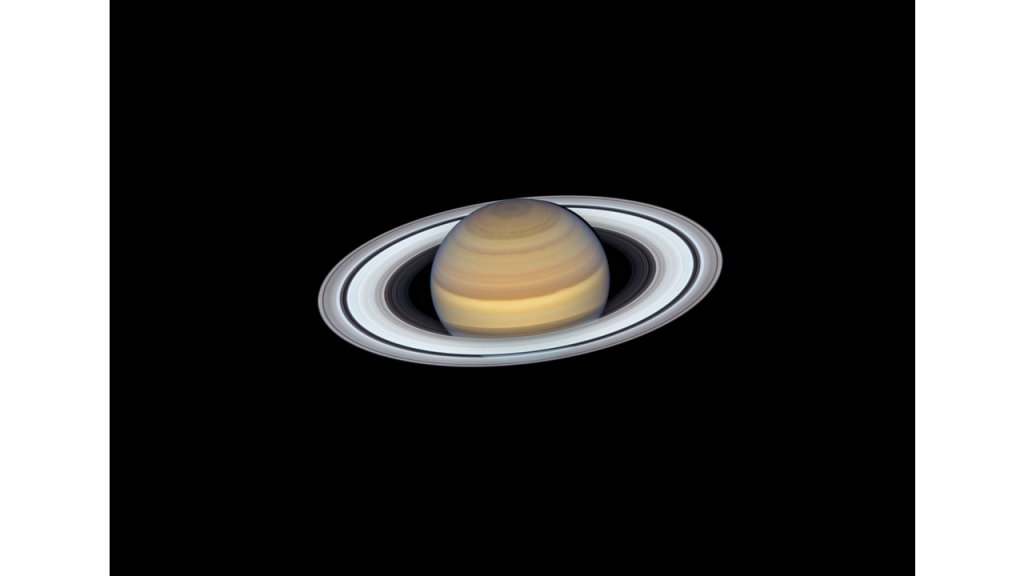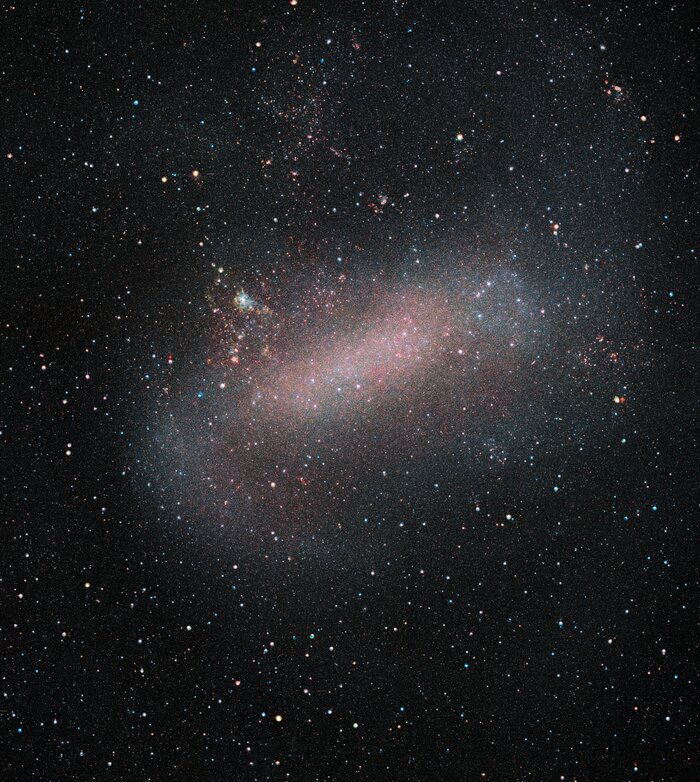Today is a slow news day, but we still have some pretty pictures and pretty weird facts to share. Join us for news about Saturn seen in detail, the Large Magellanic Cloud seen in even more detail, and hints at a new way to find Dark Matter.
Links
- It’s Friday the 13th and a full moon
- Saturn’s new portrait
- The Large Magellanic Cloud’s new portrait
- A possible new way to find Dark Matter
Transcript
Today is a somewhat slow news day thanks to it being Friday and next week being the European Planetary Science Congress, which is being held jointly with the US Division of Planetary Sciences meeting in Geneva, Switzerland. At this moment, planetary scientists the world over are working to finish off last minute preparations, are catching planes and trains, and in some cases sitting at home waiting for all the science goodness they know is coming.
We still don’t know what all will be available to live stream from that event, but when we know we will let you know, so together we can share the excitement right here on twitch.tv.
Until then, we’re just going to have to make do with what sometimes passes for news during a slow news cycle.
As mentioned, today is Friday the 13th. In many western cultures, this is a day and date combination that is considered unlucky and potentially even filled with movie style murder. It is also a full moon, with the exact moment of peak illumination occurring at 9:33pm Pacific Time. For those of you who, like me, play wizards unite, you know what a full moon means: it means werewolves and other unusual events. And when you put a full moon on a Friday night… well, I feel there must be a bad horror movie just waiting to be made.
While we aren’t into superstition here at the daily space, we can enjoy a good story and a bit of statistics. It turns out that while things like lunar eclipses and super moons – events that regularly make headlines – are actually pretty common, this alignment of Friday the 13th and a full moon is actually really rare. The last time this happened was October 13th 2000, and we’re going to have to wait 30 years before it will happen again.
So, get out there, use this excuse to look up, and enjoy the silliness of superstition … and maybe catch some werewolves in Wizards Unite.

From one light story to another, I’d like to let you know that the Hubble Space Telescope has released a new pretty picture of Saturn. Did I mention it’s a slow news day? Back on June 20th, the Earth and Saturn made this year’s closest approach. This new image shows Saturn with its northern pole cocked towards us and a bit to the side. The rings are tilted just right to show us a bit of their detail, while still cutting across disk of the planet in a striking manner. This is Saturn at its northern summer time finest. This particular tilt makes it possible for us to see the hexagonal storm that churns on Saturn’s north pole, and this season brings with it storms that stir up beautiful dark bands of color. If you are in need of a new screen backdrop, this is the image for you. While this image release doesn’t bring a lot of hard hitting science with it, this image, when viewed side by side with all the other yearly images that Hubble has taken, allows us to see how Saturn changes with the seasons, Saturnian year after year. While space probes like Cassini are able to capture much more detailed views, they are limited in how long they can safely orbit before their systems run down and we are forced to drop them into planetary atmospheres to protect moons that may have life. Hubble, which will turn 30 next April, is much longer lived, and can capture Saturn’s entire disk in one shot. While this one image – which really, you should go check out on our website, dailyspace.org, may not produce any science papers, but used in combination with other data, it may help us understand the meteorology of another world.

And from one pretty picture to another, I’d also like to let you know that the European Southern Observatory has released a new image of the Large Magellanic cloud that reveals the details of this nearby galaxy in sharp bold colors. Taken with the VISTA telescope, this image is actually made by combining a myriad of images taken through many different filters that allow different colors of light to be measured. VISTA is tuned to be senitive to near-infrared colors that are just outside of what we can see with our eyes. These particular colors of light are able to pass through clouds of gas and dust that block visible light, and this image allows astronomers to see features that we can’t eyeball through even the largest telescope. Using this data, astronomers will be working to study star formation and stellar evolution in both this nearby galaxy, and it’s partner, the Small Magellanic Cloud. We can expect to see those scientific results being published in coming months and years, but for now, we can all share the pretty picture. Again, you can check it out on dailyspace.org.


 We record most shows live, on Twitch. Follow us today to get alerts when we go live.
We record most shows live, on Twitch. Follow us today to get alerts when we go live.